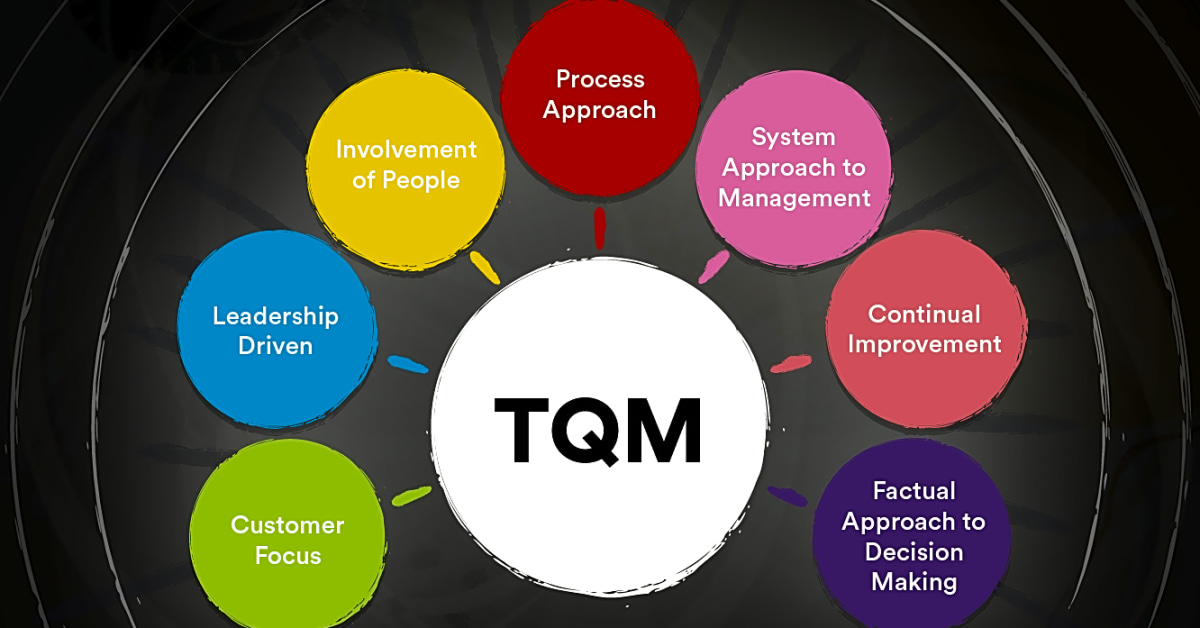In today’s fast-paced and competitive business world, quality assurance is more important than ever before. Companies are constantly striving to improve their processes, products, and services to stay ahead of the competition and meet the ever-changing needs of their customers. This is where continuous improvement comes into play. Continuous improvement in quality assurance is the ongoing effort to identify and eliminate waste, improve efficiency, and enhance overall quality in all aspects of a company’s operations. It requires a strong focus on operational leadership and a commitment to constantly evolving and adapting to new challenges. In this article, we will explore strategies for effective operational leadership in quality assurance and how it plays a vital role in the process improvement and quality control and assurance silos. So let’s dive in and discover how continuous improvement in quality assurance can help your company reach new heights of success.Continuous improvement in quality assurance is a vital aspect of operational leadership. It involves constantly reviewing and improving processes to ensure that they are efficient, effective, and aligned with the organization’s needs. In this article, we will explore the importance of quality assurance, strategies for implementing continuous improvement, the role of problem solving and decision making, team building and communication techniques, how to measure and track success, and case studies of successful continuous improvement initiatives.Firstly, it is crucial to understand the importance of quality assurance. Quality assurance is the process of ensuring that products or services meet specific quality standards and customer expectations. It is essential for maintaining customer satisfaction, reducing costs, and improving overall efficiency. Without proper quality assurance measures in place, organizations run the risk of delivering subpar products or services, which can damage their reputation and bottom line.Implementing continuous improvement strategies is key to achieving success in quality assurance. This involves regularly reviewing processes and identifying areas for improvement. By continuously seeking ways to improve, organizations can increase efficiency, reduce waste, and enhance overall performance. Some practical tips for implementing continuous improvement include conducting regular audits, gathering feedback from customers and employees, and investing in training and development programs.Problem solving and decision making are also crucial components of quality assurance. Leaders must have the skills to identify and address issues in processes, as well as make informed decisions to improve them. This requires critical thinking, data analysis, and collaboration with team members. By involving the team in problem-solving and decision-making processes, leaders can foster a culture of continuous improvement and empower employees to contribute their ideas.Effective team building and communication are essential for successful quality assurance initiatives. By fostering a positive and collaborative work environment, leaders can encourage open communication and build trust among team members. This can lead to better problem solving, decision making, and overall performance. Some techniques for team building in quality assurance include regular team meetings, cross-functional training, and team-building activities.Measuring and tracking the success of quality assurance initiatives is crucial for continuous improvement. This allows organizations to identify areas where they have made progress and areas that still need improvement. Some metrics for measuring quality assurance success include customer satisfaction rates, defect rates, and process efficiency. By regularly tracking these metrics, organizations can make data-driven decisions and continuously improve their processes.To further illustrate the importance and benefits of continuous improvement in quality assurance, let’s look at some case studies. Toyota is a prime example of a company that has successfully implemented continuous improvement in its quality assurance processes. By constantly seeking ways to improve their manufacturing processes, Toyota has become known for producing high-quality vehicles with minimal defects. Another example is Amazon, which uses continuous improvement to enhance its delivery processes and ensure customer satisfaction.In conclusion, continuous improvement in quality assurance is crucial for effective operational leadership. By understanding the importance of quality assurance, implementing continuous improvement strategies, utilizing problem-solving and decision-making skills, building effective teams and communication, measuring success, and learning from successful case studies, leaders can drive their organizations towards success. By adopting a culture of continuous improvement, organizations can achieve higher levels of efficiency, effectiveness, and customer satisfaction.
Understanding the Importance of Quality Assurance
Quality assurance is essential for any organization, no matter the industry. It involves monitoring processes, identifying problems, and implementing solutions to ensure that products or services meet the desired standards. Without quality assurance, an organization risks losing customers, damaging their reputation, and facing legal consequences. It is the responsibility of the operational leader to ensure that quality assurance is a top priority for the entire team.
The Role of Problem Solving and Decision Making in Quality Assurance
Problem solving and decision making are crucial skills for operational leaders. In quality assurance, these skills are used to identify issues, determine the root cause, and implement effective solutions. This requires a systematic approach and strong analytical skills. Operational leaders must also be able to make tough decisions quickly in order to maintain productivity and quality standards.
Team Building and Communication Techniques for Quality Assurance
Quality assurance is a team effort, and it’s important for operational leaders to create a culture of collaboration and communication. This can be achieved through team building activities, open communication channels, and training programs. By fostering a positive and supportive environment, teams are more likely to work together towards continuous improvement.
How to Measure and Track the Success of Quality Assurance Initiatives
To ensure that continuous improvement efforts are successful, it’s important to have metrics in place to track progress. This could include customer satisfaction surveys, defect rates, or process cycle times. By regularly monitoring these metrics, operational leaders can identify areas for improvement and make data-driven decisions.
Implementing Continuous Improvement Strategies
Continuous improvement is a never-ending process that involves constantly reviewing and refining processes to make them more efficient and effective. This can include making small changes or implementing larger initiatives. For example, a manufacturing company may use lean principles to streamline their production process, while a software company may use agile methodologies to improve their development process. Whatever the approach, the goal is to continuously improve and stay ahead of the competition.
Case Studies of Successful Continuous Improvement in Quality Assurance
Real-life examples are always helpful in understanding how continuous improvement can be implemented in different industries. This section will provide case studies of companies that have successfully implemented quality assurance initiatives and seen tangible results. By learning from these examples, readers can gain insights and inspiration for their own organizations.
Continuous improvement in quality assurance is a key aspect of effective operational leadership. By understanding the importance of quality assurance, implementing continuous improvement strategies, and utilizing problem solving and decision making skills, leaders can improve organizational efficiency and performance. Team building and communication techniques, as well as tracking metrics and learning from successful case studies, are also crucial for continuous improvement. By continuously striving to improve processes, operational leaders can lead their teams towards success.







